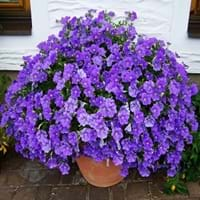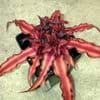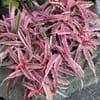Life Span
Annual
Perennial
Type
Tender Perennial
Perennial
Origin
North America, Mexico, Central America, South America
California
Types
Not Available
Not Available
Habitat
Depression on prairies, Moist Ditches
Chaparral, River side
USDA Hardiness Zone
9-11
7-10
Sunset Zone
8, 9, 14, 15, 16, 17, 18, 19, 20, 21, 22, 23, 24
H1, 4, 5, 6, 7, 8, 9, 10, 11, 12, 14, 15, 16, 17, 18, 19, 20, 21, 22, 23, 24
Habit
Not Available
Upright/Erect
Minimum Width
Not Available
Flower Color
White, Yellow, Red, Blue, Purple, Orange, Pink
White, Yellow
Flower Color Modifier
Bicolor
Bicolor
Fruit Color
Not Available
Green, Tan
Leaf Color in Spring
Green, Gray Green
Gray Green
Leaf Color in Summer
Green, Gray Green
Gray Green
Leaf Color in Fall
Green, Gray Green
Gray Green
Leaf Color in Winter
Light Green
Light Green
Leaf Shape
Oblong
Lance shaped
Plant Season
Spring, Summer, Fall, Winter
Spring, Summer
Sunlight
Full Sun, Partial Sun
Full Sun
Type of Soil
Loam, Sand
Loam, Sand
The pH of Soil
Acidic, Neutral
Neutral, Alkaline
Soil Drainage
Well drained
Well drained
Bloom Time
Indeterminate
Early Spring, Spring, Late Spring, Early Summer, Summer
Repeat Bloomer
Not Available
Yes
Tolerances
Drought
Drought
Where to Plant?
Container, Ground, Pot
Ground
How to Plant?
Seedlings, Stem Planting, Transplanting
Cuttings, Seedlings
Plant Maintenance
Medium
Medium
Watering Requirements
Keep the ground moist but not water-logged, Requires regular watering, Requires watering in the growing season
Needs watering once a week, Water well when planted
In Summer
Lots of watering
Lots of watering
In Spring
Moderate
Moderate
In Winter
Average Water
Average Water
Soil pH
Acidic, Neutral
Neutral, Alkaline
Soil Type
Loam, Sand
Loam, Sand
Soil Drainage Capacity
Well drained
Well drained
Sun Exposure
Full Sun, Partial Sun
Full Sun
Pruning
Prune to stimulate growth
prune nearly to the ground in late fall
Fertilizers
All-Purpose Liquid Fertilizer
organic fertlizers
Pests and Diseases
Red blotch
Verticillium Wilt
Plant Tolerance
Drought
Drought
Flower Petal Number
Single, Double, Semi-Double
Single
Showy Foliage
No
Not Available
Foliage Texture
Medium
Not Available
Foliage Sheen
Matte
Not Available
Attracts
White bugs
Bees, Birds, Butterflies
Allergy
Not Available
no allergic reactions
Aesthetic Uses
Beautification, Bouquets, Landscape Designing, Showy Purposes, Used for decorating walls, fences, gates, hedges, etc.
Showy Purposes
Beauty Benefits
Not Available
Not Available
Environmental Uses
Air purification
Air purification
Medicinal Uses
Not Available
antimicrobial, Astringent, Gum Problems, Stomach pain
Part of Plant Used
Flowers
Flower Stalk
Other Uses
Decoration Purposes, Showy Purposes, Used as Ornamental plant
Used as Ornamental plant
Used As Indoor Plant
Yes
No
Used As Outdoor Plant
Yes
Yes
Garden Design
Bedding Plant, Container, Hanging Basket, Houseplant, Mixed Border, Rock Garden / Wall, Tropical
Feature Plant, Groundcover, Mixed Border, Wildflower
Botanical Name
CALIBRACHOA
ROMNEYA coulteri
Common Name
Calibrachoa, Million Bells
Matilija Poppy
In Hindi
Calibrachoa
Matilija Poppy
In German
Calibrachoa
Matilija Poppy
In French
Calibrachoa
Matilija Poppy
In Spanish
Calibrachoa
Matilija amapola
In Greek
Calibrachoa
Matilija παπαρούνας
In Portuguese
Calibrachoa
Matilija Poppy
In Polish
Calibrachoa
Matilija Poppy
In Latin
Calibrachoa
Matilija Poppy
Phylum
Tracheophyta
Magnoliophyta
Class
Magnoliopsida
Magnoliopsida
Order
Solanales
Papaverales
Family
Solanaceae
Papaveraceae
Genus
Calibrachoa
Romneya
Clade
Angiosperms, Eudicots
Angiosperms, Eudicots
Tribe
Not Available
Not Available
Subfamily
Petunioideae
Papaveroideae
Season and Care of Calibrachoa and Matilija Poppy
Season and care of Calibrachoa and Matilija Poppy is important to know. While considering everything about Calibrachoa and Matilija Poppy Care, growing season is an essential factor. Calibrachoa season is Spring, Summer, Fall and Winter and Matilija Poppy season is Spring, Summer, Fall and Winter. The type of soil for Calibrachoa is Loam, Sand and for Matilija Poppy is Loam, Sand while the PH of soil for Calibrachoa is Acidic, Neutral and for Matilija Poppy is Neutral, Alkaline.
Calibrachoa and Matilija Poppy Physical Information
Calibrachoa and Matilija Poppy physical information is very important for comparison. Calibrachoa height is 102.00 cm and width 20.30 cm whereas Matilija Poppy height is 120.00 cm and width Not Available. The color specification of Calibrachoa and Matilija Poppy are as follows:
Calibrachoa flower color: White, Yellow, Red, Blue, Purple, Orange and Pink
Calibrachoa leaf color: Green and Gray Green
Matilija Poppy flower color: White and Yellow
- Matilija Poppy leaf color: Gray Green
Care of Calibrachoa and Matilija Poppy
Care of Calibrachoa and Matilija Poppy include pruning, fertilizers, watering etc. Calibrachoa pruning is done Prune to stimulate growth and Matilija Poppy pruning is done prune nearly to the ground in late fall. In summer Calibrachoa needs Lots of watering and in winter, it needs Average Water. Whereas, in summer Matilija Poppy needs Lots of watering and in winter, it needs Average Water.





